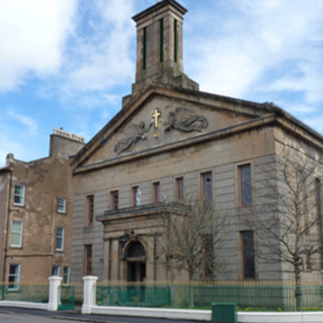Discover the Rich History of Abercromby Street
- Peter Mortimer
- Oct 1, 2024
- 2 min read
Updated: Feb 13
The street forms part of the division between Calton and Bridgeton running from 550 Gallowgate to London Road and was a mixture of housing, shops, factories and public buildings.
It was originally known as Witch Lone and was reputedly the route used by stonemasons working on Glasgow Cathedral, leaving Rutherglen crossing the ford on the River Clyde at Dalmarnock and making their way north to the Cathedral. It later became known as Abercromby Street, named after General Sir Ralph Abercromby who fought and died in the Egyptian War of 1801. Its southern portion was known as Clyde Street and Cross Street.
At numbers 309-341 stands Abercromby Street Burial Ground (also referred to as the Calton Burial Ground and the Calton Weavers’ Cemetery) which was opened in 1787 and extended in 1822. On the inner wall of the burial ground is a plaque dedicated to three of the Calton Weavers who were shot dead by Glasgow’s 39th Military Regiment. The weavers were protesting at a reduction in the price they received for the cloth they produced. They assembled at Drygate to when the city magistrates ordered the regiment to open fire to clear the crowd. Three died and a further three were mortally wounded.
Also buried here is the Reverend James Smith who was pastor to Abraham Lincoln, President of the United States. The Lincolns were occasional attenders at Smith’s church at Springfield, and when their three-year-old son died, he presided over the funeral, and later became friends with the Lincolns.
St Mary’s RC Church opened in 1842 to meet the needs of the local population and is the second oldest parish in Glasgow behind St Andrew’s, which later became a cathedral. The crypt of the A-listed St Mary’s holds the remains of two bishops and 12 priests. On 25th July 2021 a sculpture dedicated to the Irish Famine named ‘Tower of Silence’ designed by John McCarron was unveiled in the grounds of the church.
An adjacent school was built in 1913 with 43 classrooms each capable of taking fifty pupils with the playground located on the roof.
In 1878 the Abercromby Street Home for Males was built with accommodation for 272 residents in cubicles and basement dormitory, the facility also included a dining room and a shop selling food. It was demolished in 1982.
On the gable of the tenement at number 376 is a mural of St Thenew, mother of Glasgow’s patron saint Mungo. Thenew’s shawl sports twenty-nine motifs which represent the 29 women and girls killed when a wall collapsed in 1889 at the nearby Templeton’s carpet factory. Thenew also gave her name to St Enoch Square. The mural unveiled in 2019 celebrates the 40th anniversary of Thenew Housing.
In 1982 the Bridgeton Health Centre was opened costing £1M to build, with a staff of over 100 serving 50,000 patients in the wider area.









Comments